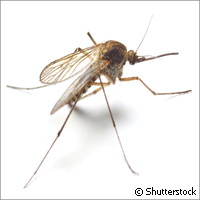New tools needed to relieve malaria burden in Africa, study finds
Researchers in the UK have demonstrated that the tools currently available for combating malaria could dramatically reduce the burden of malignant malaria on parts of Africa if a comprehensive, sustained intervention programme were in place. The findings, published in the Public Library of Science (PLoS) Medicine journal, are an outcome of the TRANSMALARIABLOC ('Blocking malaria transmission by vaccines, drugs and immune mosquitoes: efficacy assessment and targets') project, financed with EUR 3 million under the Health Theme of the Seventh Framework Programme (FP7). Substantial efforts have been put into reducing malaria transmission in Africa over the past decade. However, it has been difficult to determine exactly how effective specific interventions can be. Although several countries have reported a decline in malaria transmission, this deadly disease still poses a health burden. According to the study, half of the world's population is at risk of malaria infection, and every year it claims the lives of nearly 1 million people in sub-Saharan Africa. Plasmodium falciparum, one of the species of Plasmodium that causes malaria in humans, is transmitted by Anopheles mosquitoes that normally bite (and inject the deadly parasites) at night. Using an advanced simulation model, the researchers were able to show that with the widespread use of durable, insecticide-permeated bednets, and the availability of artemisinin-combination therapy (ACT), a parasite threshold of 1% could be achieved in areas with low to moderate transmission of malaria, where mosquitoes tend to stay indoors. The individual-based simulation model incorporated three species of mosquito and the prevalence of P. falciparum (malignant malaria) in 34 settings across Africa with differing transmission levels. The researchers looked at the impacts of switching to ACT, adopting bug-repellent bednets, ensuring continued roll-out of the treated bednets, regular indoor residual spraying, seasonality, mass screening and treatment on areas with low, moderate and high transmission levels. They also looked at the potential effect of a future vaccine. The findings showed that settings with low and moderate transmission could benefit significantly from stepping up intervention efforts, but that new tools are sorely needed in high-transmission areas and those where mosquitoes mainly bite outdoors. Given the current set of tools, say the authors, it is unrealistic to expect that parasite prevalence could drop below 1% in some settings with high transmission. New interventions should that target outdoor mosquitoes, notably Anopheles arabiensis. Malaria transmission is very complex, and there are a lot of uncertainties. The new model represents only a simplification, caution the authors, not a firm set of predictions. 'Our model is necessarily a simplification of the more complex dynamics underlying malaria transmission and control, so numerical results should be interpreted more as providing intuitive insight into potential scenarios than as firm predictions of what might happen in a given setting,' the study reads. TRANSMALARIABLOC researchers are evaluating tools based on state-of-the-art understanding of parasite and mosquito biology. The project expects to create a fresh environment for innovative research into malaria transmission.
Countries
United Kingdom



